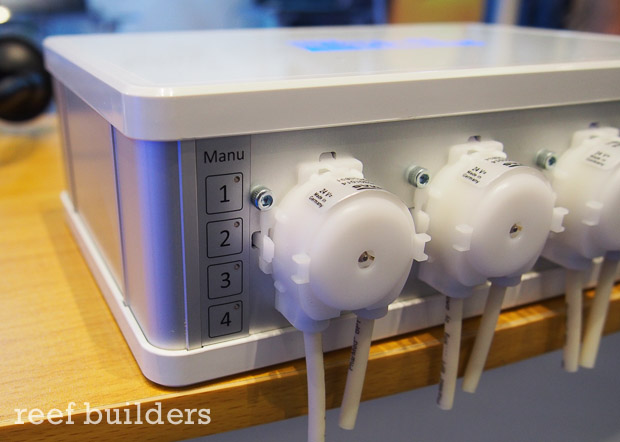The GHL Doser 2 was one of the most exciting products of InterZoo 2014 and it held a similar position of high regard in America for the Mile High Marine Aquarium Conference of North America. While the unit we first revealed in early summer was an early prototype, the working model that GHL showed off in Denver last weekend is a lot closer to what will ship and it’s got a laundry list of features that suggest that the GHL Doser 2 could be so much more than a simple dosing pump.

Starting off, the Doser 2 has four stepper motor powered dosing heads that can dose down to 0.1ml at a time, and the units will be available in a three or four pump dosing configuration. The Doser 2 is controllable with a direct wifi connection via iOS, Android or MY GHL cloud software which allows users to unlock the power of a very intuitive graphical user interface. For specific dosing needs, you’ll be able to daisy chain up to sixteen pumps into one massive chemical delivery device.
So far these are all features are par for the course for a good, modern dosing unit but GHL has imagined a complete “dosing environment” to really make their dosing pump a stand out machine. This new approach is evident on the huge compliment of accessory ports on the backside of the GHL Doser 2’s housing.

There’s a plethora of inputs including a Profilux Address Bus for monitoring the temperature of chilled coral foods for dosing, four 24vdc outputs for GHL’s forthcoming dedicated stirrers, an ethernet port, USB port, BNC connection and even a Firewire port. With so many different inputs and outputs on this sophisticated dosing pump make it look like a build-your-own computer from the 2000s, and with so many features the new GHL Doser 2 might as well be a full fledged aquarium controller.
We’ll soon find out the full capability of the new dosing pump and system from GHL when the units start shipping later this year. Pre-orders will begin september 15th with the three pump model retailing for $484 and the four channel GHL Doser 2 setting you back $559. [GHL NA]




